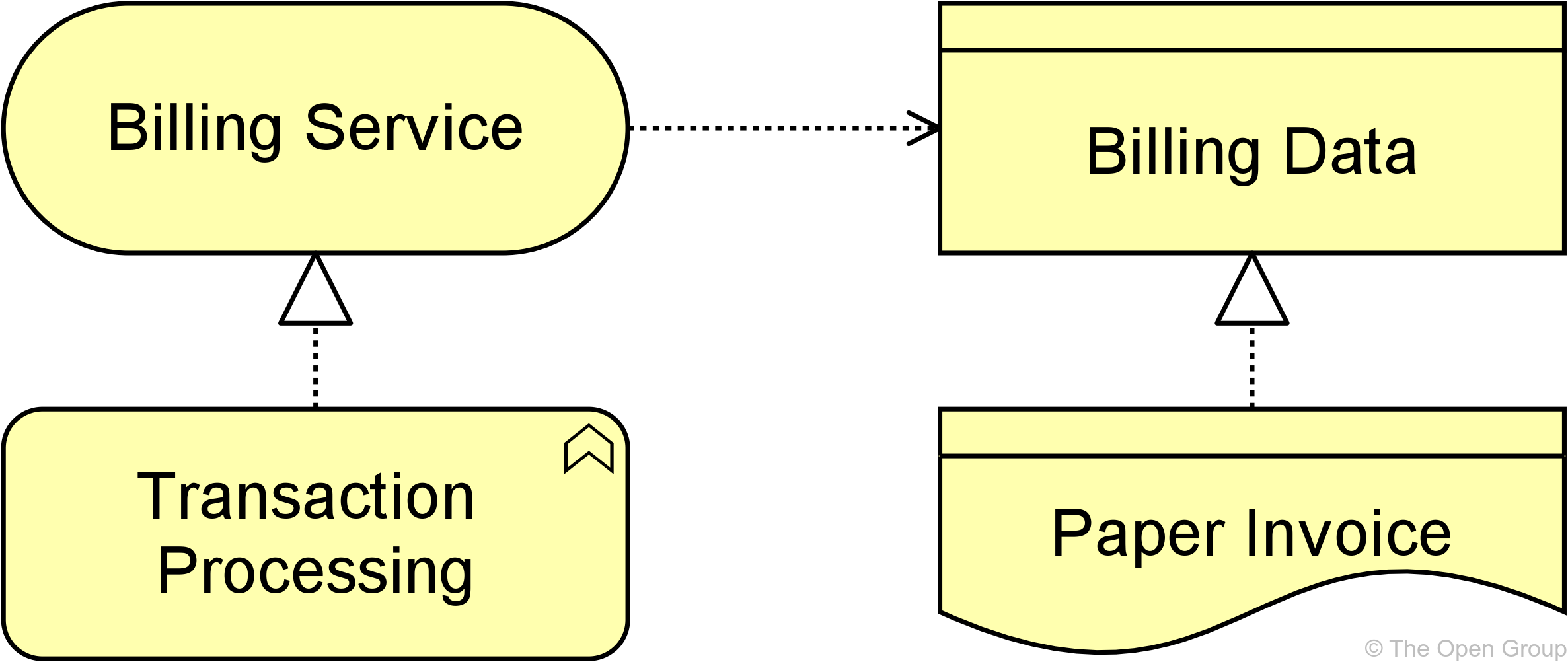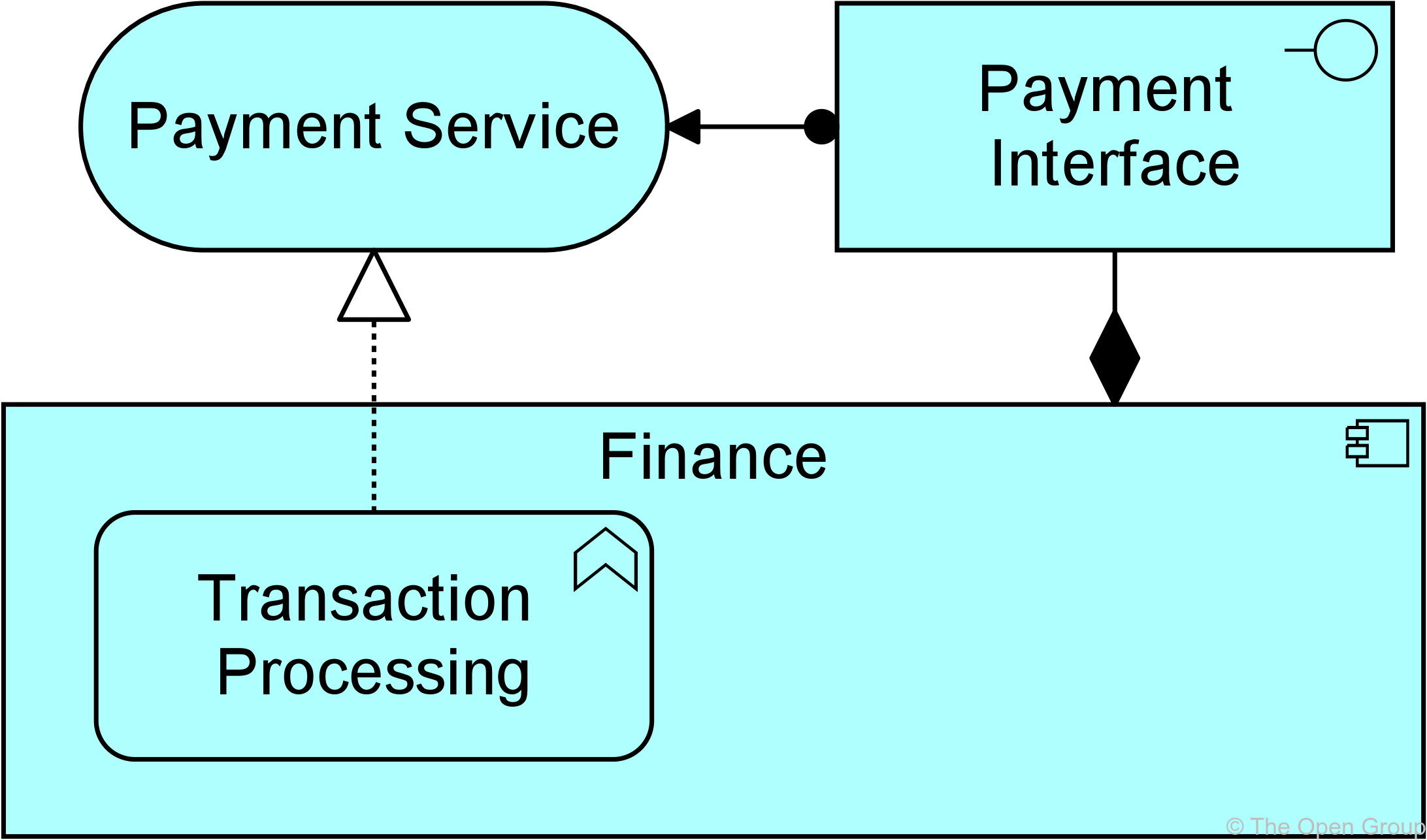Introduction
In the realm of enterprise architecture, the ArchiMate modeling language serves as a powerful tool for visualizing, describing, and analyzing complex systems. Central to ArchiMate are the element structural relationships, namely Realization, Assignment, Aggregation, and Composition. These relationships play a crucial role in defining the connections and dependencies between different architectural elements, providing a holistic view of the system under consideration.
Realization: Bringing Abstractions to Life

Realization is a fundamental structural relationship in ArchiMate that signifies the implementation or manifestation of one element by another. In simpler terms, it answers the question: “How is an abstract idea or concept brought to life?” For example, if you have an abstract service, its realization might be a specific software application or a physical device. Realization relationships establish a clear link between conceptual and concrete elements, aiding architects in understanding the tangible manifestations of their designs.

Assignment: Defining Responsibilities and Ownership
![]()
The Assignment relationship in ArchiMate is all about defining responsibilities and ownership within an architecture. It answers the question: “Who is responsible for a specific element, and what is their role?” Assignments help in clarifying the roles and accountabilities of different elements within the architecture. For instance, an actor may be assigned to a business process, indicating who is responsible for carrying out that particular process. This relationship contributes to better governance and management of the architectural elements.

Aggregation: Grouping Elements for Simplicity

Aggregation in ArchiMate involves grouping elements to simplify the representation of complex structures. This relationship is a way of expressing that a collection of elements forms a larger, more significant whole. For example, components can be aggregated to represent a higher-level system or subsystem. Aggregation relationships assist architects in managing complexity by allowing them to focus on higher-level abstractions and relationships without delving into unnecessary detail.

Composition: Whole-Part Relationships

Composition is a specialized form of aggregation that signifies a strong whole-part relationship between elements. In this relationship, the parts are integral components of the whole, and the destruction of the whole would result in the destruction of its parts. For instance, a car composed of an engine, wheels, and chassis represents a composition relationship. Composition relationships in ArchiMate help model architectures where certain elements are inseparable components of a larger, cohesive entity.

Purpose in ArchiMate
These element structural relationships in ArchiMate serve several essential purposes in the practice of enterprise architecture:
- Clarity and Communication: By explicitly defining how different elements are related, ArchiMate enhances communication among architects, stakeholders, and decision-makers. The visual representation of relationships aids in conveying complex architectural concepts in a comprehensible manner.
- Precision in Modeling: The relationships provide a precise way of modeling the intricate dependencies and connections within a system. This precision is crucial for architects to create accurate and reliable representations of the real-world structures they are designing.
- Analysis and Impact Assessment: Architects can analyze the impact of changes or decisions by understanding how modifications in one element may affect others through these relationships. This capability is vital for making informed decisions during the evolution of an architecture.
- Consistency and Standardization: ArchiMate’s structural relationships contribute to the standardization of architectural models. Consistent usage of these relationships promotes a shared understanding of architectural concepts, fostering collaboration and alignment across teams and projects.
Conclusion
The element structural relationships in ArchiMate, including Realization, Assignment, Aggregation, and Composition, form the backbone of effective enterprise architecture modeling. They provide a means to represent the dynamic and interconnected nature of systems, enabling architects to create comprehensive, accurate, and communicative models. By understanding and leveraging these relationships, architects can navigate the complexities of modern enterprises and drive informed decision-making for sustainable and adaptable architectures.
Recommend A Powerful and Versatile Tool for EA
Visual Paradigm is indeed a powerful and versatile tool for enterprise architecture (EA). It offers a comprehensive suite of features that cater to the needs of architects and stakeholders involved in the design, analysis, and documentation of complex systems. Here are some reasons why Visual Paradigm could be a valuable choice for your enterprise architecture endeavors:
- Intuitive and User-Friendly Interface: Visual Paradigm provides an intuitive and user-friendly interface, making it accessible for both beginners and experienced architects. The drag-and-drop functionality, coupled with a well-organized toolbar, streamlines the modeling process.
- ArchiMate Support: Visual Paradigm supports the ArchiMate modeling language, which is specifically designed for enterprise architecture. This ensures that you can create models that adhere to industry standards, facilitating clear communication and consistency in your architectural representations.
- Rich Set of Modeling Tools: The tool offers a rich set of modeling tools for various aspects of enterprise architecture, including business processes, organizational structures, application landscapes, and more. This versatility allows architects to create comprehensive models that cover different domains of the enterprise.
- Collaboration and Team Support: Visual Paradigm facilitates collaboration among team members through features like team collaboration, version control, and real-time sharing. This is crucial for large-scale projects where multiple stakeholders need to contribute to the architectural modeling process.
- Analysis and Simulation: The tool provides analysis and simulation features that allow architects to evaluate the impact of changes, assess system performance, and identify potential risks. These capabilities contribute to making well-informed decisions during the design and evolution of the architecture.
- Documentation and Reporting: Visual Paradigm offers robust documentation and reporting features, helping architects generate detailed documentation from their models. This is essential for communicating architecture decisions, justifying design choices, and ensuring that all stakeholders have access to relevant information.
- Integration Capabilities: Visual Paradigm supports integration with other tools and platforms, enabling seamless collaboration with existing workflows and systems. This ensures that your enterprise architecture efforts are integrated into the broader context of your organization’s tools and processes.
- Continuous Updates and Support: Visual Paradigm is actively developed and updated, providing users with access to new features, improvements, and bug fixes. Additionally, their support services contribute to a positive user experience by addressing any queries or issues that may arise during usage.
Before making a decision, it’s advisable to try out the tool through a trial version or free edition to assess how well it aligns with your specific requirements and preferences. Remember to consider factors such as the scale of your projects, the specific features you need, and the preferences of your team members.
Resources
- Introduction: ArchiMate® 3.2 Specification
- Free Online ArchiMate Tool + Examples – Cybermedian
- What is ArchiMate?
- ArchiMate – Wikipedia
- The ArchiMate® Enterprise Architecture Modeling Language | www.opengroup.org
- An Overview of ArchiMate – the Enterprise Architecture Modeling Language – Cybermedian
- Comprehensive Tutorial on ArchiMate – Visual Paradigm Guides
- A. Summary of Language Notation : ArchiMate …
- Comprehensive Guide to the 14 UML Diagram Types – Cybermedian